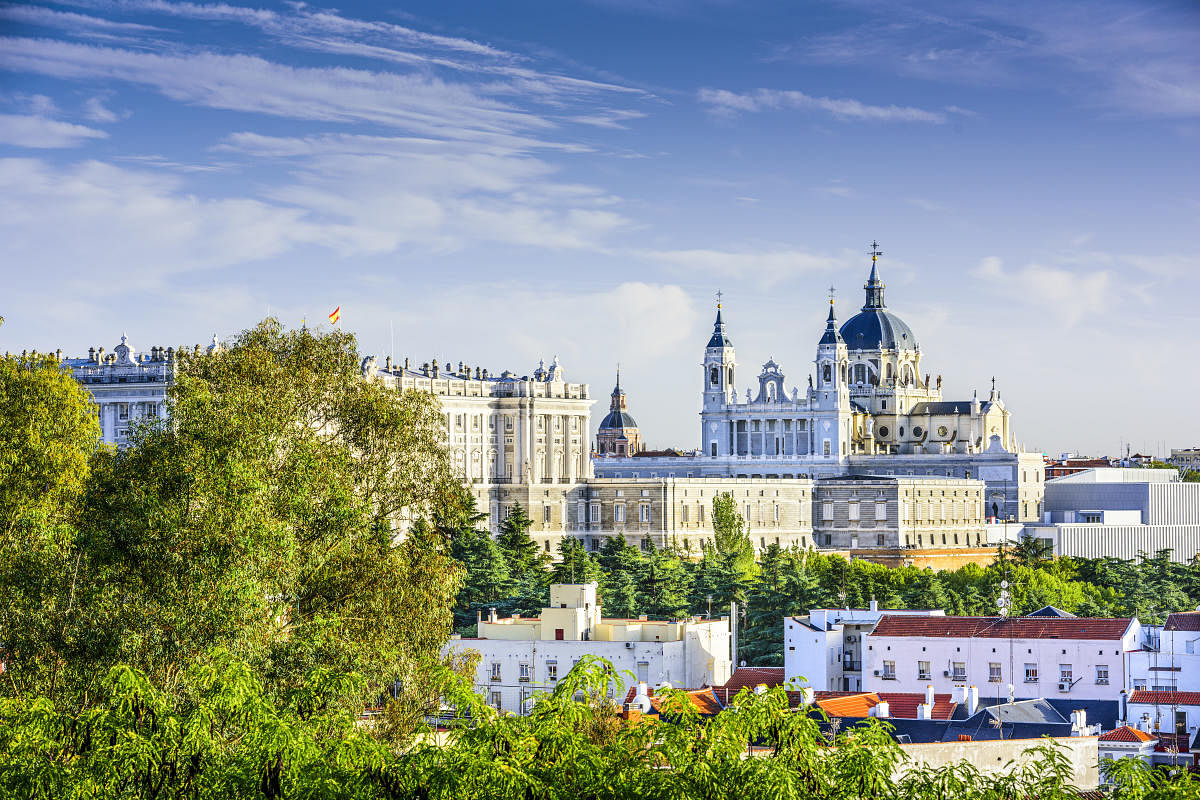
Like the rest of the world, Spain has seen a tough year because of the pandemic. Back in April, a Reuters article summed it up: ‘The tones of Madrid’s archbishop rang through an echoey and empty Almudena Cathedral on Sunday evening, as he gave his first digital-only Sunday service due to coronavirus.’ “To me, it seems full because I know people are watching at home,” the Archbishop of Madrid, Cardinal Carlos Osoro told Reuters. Spain, at that time, was the second most affected European country after Italy and was in lockdown like many other parts of the world. With a largely Catholic population, it spent the Holy Week of Easter indoors. Would Christmas be different?
The mention of the Almudena Cathedral in Hapsburg Madrid brought back fond memories of our trip to Spain a little over a year ago.
Hapsburg Madrid is the name given to the specific area of Madrid that was built during the reign of the Habsburg dynasty (1516-1700) and is also known in Spain as Casa de Austria.
Almudena Cathedral (Cathedral de Nuestra Señora de la Almudena) — a Catholic church, is located right next to the Royal Palace (Palacio Real). It is also the seat of the Roman Catholic Archdiocese of Madrid. It is quite different from other churches and cathedrals in Europe as it has a mix of architectural styles, from neo-Gothic to neo-Romanesque to modern.
The history
The foundation stone for the present structure was first laid in 1883, where an ancient mosque existed earlier. It so happens that the Almudena Cathedral derives its name from the Arabic word, al-mudayna which means citadel. This mosque was destroyed in 1083 when Alfonso VI reconquered Madrid from the Moors.
Francisco de Cubas — a Spanish architect and politician, drew up the first plans for the church in 1879 when he was commissioned by Alfonso XII, to create a pantheon for the late Queen Maria de la Mercedes. Francisco de Cubas designed the cathedral in the neo-Gothic revival style. However, the construction that got underway in 1885 was slow to progress due to a lack of funding. When construction was barely restarting, the Spanish Civil War of 1936 further halted it.
Work on the cathedral restarted only in 1950 and the project was completed by architects Fernando Chueca Goitia and Carlos Sidro, who made parts of the building in neoclassical style. They adapted the previous design and added a baroque exterior to match the grey and white façade of the adjacent building of Palacio Royale. It was considered completed as recently as 1993 when the cathedral was consecrated by Pope John Paul II, nearly 100 years after it was started.
The structure
We look at the main façade from the Armory Square that faces the Royal Palace (Palacio Royale), which consists of a large double colonnade portico. The main
entrance of the cathedral shows two granite towers, which emphasise the presence of the ‘gabarros’ or barges made from stone, that have come from the quarries of Zarzalejo near Madrid. The façade that faces the street called Bailén Street is made up of white granite. Both façades have cornices, bases, and capitals of columns and stone ornamentation carved in Colmenar Stone from Andalusia.
It is in the north façade that we look up to see the sculpture of de Nuestra Señora de la Almudena (the Virgin Mary with baby Christ). What makes the Almudena Cathedral well worth a visit is its uniqueness and sheer size. The interior of the cathedral is neo-Gothic in style and houses many chapels and a museum.
The double dome of the cathedral is Gothic inside and Baroque outside. Perhaps this mixing of styles resulted in controversies while the cathedral was being built. You also find the 12 apostles on the domes. In front of the cathedral, a place has been created that serves as a large atrium. Below the Almudena Cathedral lies the neo-Romanesque crypt that houses a 16th-century image of the Virgen de la Almudena. We learned that there are over 400 columns adorned with Biblical figures, scenes from nature, and even the symbol of Madrid, the bear and the strawberry tree. It also has a museum that houses effigies of the city’s patron saints: The Virgin Mary of la Almudena and San Isidro Labrador, and has an exhibition of the life of the Church through the seven sacraments. As we step outside towards Calle de Bailén street, we spot three bronze doors that are interestingly decorated with themes based on the Holy Trinity and the Spanish Catholic monarchy. These doors were made by contemporary sculptor Luis Antonio Sanguino upon a request by the Cardinal of Madrid in the year 2000.
The legend
There is a legend that mentions that when Alfonso VI seized Madrid from the Muslims, he became obsessed with locating a lost idol of Mother Mary that had been entombed in one of the walls of a building. It is said that the statue was carved by a saint called Nicodemus from cedar and juniper and painted by Saint Luke — one of the four evangelists. Nicodemus was a Pharisee and a member of Sanhedrin — a tribunal in Israel, mentioned in the Gospel of John. The statue was brought to Spain by Saint James on his journey while spreading the gospel. It is said that when the Moors took over Madrid in the 8th century, the statue was taken and hidden inside the walls of the town by the Spanish.
Unable to find it, Alfonso VI, who conquered the city 300 years later, prayed intensely until a section of a wall fell apart and revealed the icon inside along with the candles still burning with which she had been entombed. The current statue, however, in the Cathedral of Madrid is dated to be from the late 15th century. Dan Brown fans may recall that this interesting cathedral also finds a mention in the author’s book Origin.